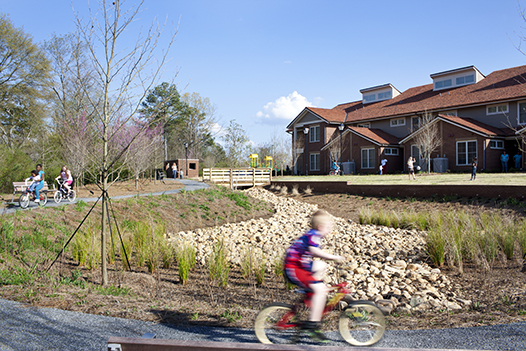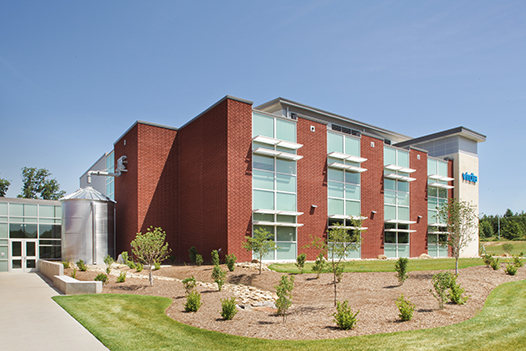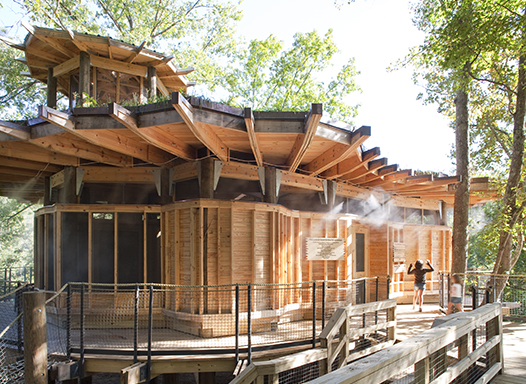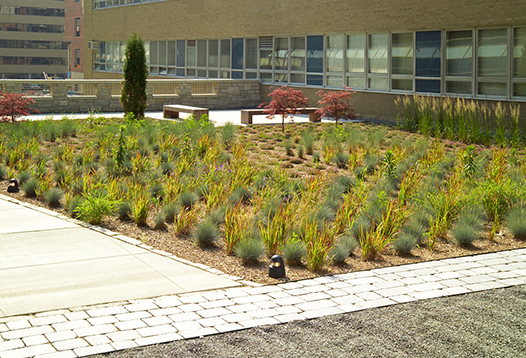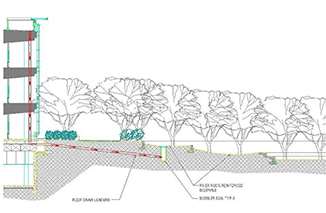Expertise
Water
From changing natural site hydrology to consuming a precious resource, buildings have a significant impact on water. Our designs celebrate this limited resource while striving to use it responsibly.
Natural Stormwater Management
Non-point source pollution, runoff from buildings and paving, is now the leading source of water quality violations in the United States. Natural stormwater management strategies such as bioswales, water quality ponds and constructed wetlands, can more closely mimic the natural hydrologic cycle, slowing and treating runoff on site.
Rainwater Harvest
Captured rainwater can be used to dramatically reduce a building’s potable water use. Most commonly it is utilized for irrigation but in these examples, the harvested rainwater is used for toilet flushing too, eliminating the use of potable water for sewage conveyance. Cisterns for storage can either be visible green design features such as the rooftop cistern at the Southface Eco Office or the exposed, above ground cistern at the Sustainable Energy Technology Center Building, or hidden below ground like the supplemental in-ground cistern at the Eco Office.
Evaporative Cooling
Water can also be used to improve comfort in an energy-efficient manner. The Camp Twin Lakes Treehouse uses misters at the tree house perimeter to passively cool occupants. The Southface Eco Office uses captured rainwater for both an ‘Eco Mesh’ misting system to improve the efficiency of the air-to-air heat pumps as well as a ‘Coolerado’ evaporative air conditioning system used to pre-cool ventilation air.
Green Roofs
LAS has designed numerous green roofs, ranging from light-weight extensive systems through mid-weight semi-intensive system to full-depth intensive systems. Green roofs provide myriad benefits beyond reduction and treatment of stormwater, including reducing cooling loads, providing habitat, providing a ‘green’ aesthetic, reducing noise transmission and extending roof life. The LEED Gold certified Gwinnett Environment and Heritage Center’s extensive green roof, over an acre in area, was the nation’s largest sloped green roof installation at the time of completion. Our in-house Green Roof Professional accredited designers have extensive experience with the design of this unique green building technology.
Condensate Harvest
In addition to rainwater harvest, condensate from a building’s air conditioning system can provide a ready source of water to offset potable water use. In this example at the LEED Platinum certified Biodesign Institute at Arizona State University, mechanical system condensate is collected in a below-ground tank, providing 100 percent of the irrigation water for the building’s Sonoran desert inspired water-efficient landscaping.
Composting Toilets
Fully waterless composting toilets can dramatically reduce a building’s potable water use, but their ‘outhouse like’ fixtures may be objectionable in a commercial or institutional environment. The ‘foam flush’ composting toilets utilized at the LEED Platinum certified Eco Office have the look of a more conventional fixture with the water savings of a nearly waterless composting fixture. Solid waste is aerobically digested in a composting chamber below and liquid waste, known as ‘compost tea’ is separated for use on site as a nitrogen-rich soil amendment.
The Camp Twin Lakes Tree House features a conventional, waterless composting toilet system appropriate for its natural setting.
Ultra Low-Flow Plumbing Fixtures
Waterless urinals, pint-flush urinals, dual-flush toilets and high-efficiency faucets provide ‘state of the shelf’ alternatives to conventional plumbing fixtures at minimal to no added cost. These fixtures have become standard on our projects.

